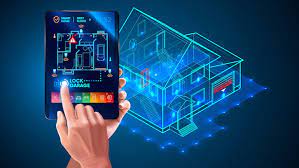Older adults can save tens of thousands of dollars annually by choosing assisted living communities over aging in place in their homes.
Unlike point solutions, Inspiren unifies resident safety, care planning, staffing, and emergency response into a single AI-powered platform.
An artificial intelligence-powered virtual assistant platform for senior living and care providers.

 Smart home technologies are not part of the home care solution set.
Smart home technologies are not part of the home care solution set.  What is a Smart Home? Should it be Connected?
What is a Smart Home? Should it be Connected?  Smart home, plugged in but not connected. Consider the Boston Consulting Group’s 2018 market sizing and landscape
Smart home, plugged in but not connected. Consider the Boston Consulting Group’s 2018 market sizing and landscape  It's 2021 -- are older adults well-served by technology? Some progress has been made --
It's 2021 -- are older adults well-served by technology? Some progress has been made --